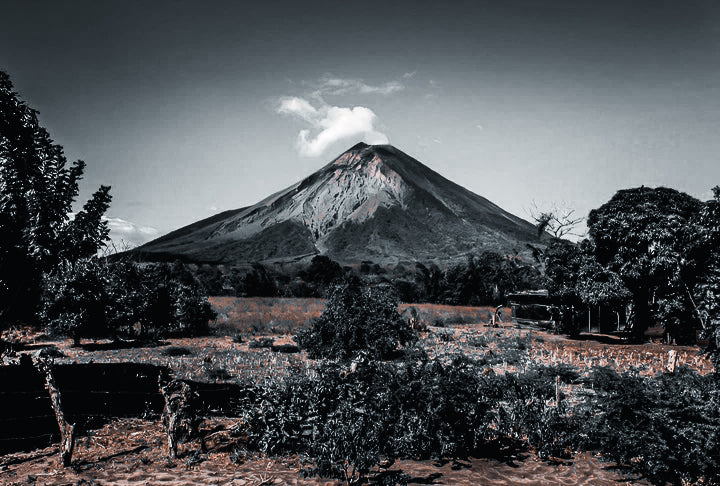Nicaragua is an interesting place and is known as many things. Firstly, It is known as “the land of lakes and volcanoes” due to it having over 40 volcanoes, and as many as 19 are reported to be active. This provides a rich soil for coffee beans to thrive.
Now if anyone has ever watched a documentary or two about volcanoes, you’ll know that the volcanic soil contains a lot of nutrients making it an awesome natural fertiliser.
The active volcanoes in Nicaragua line the pacific coast and are part of the “Ring of Fire”. The Masaya volcano is located south of Managua and is one of the most active volcanoes in the world. The Masaya volcano is one of few places in the world where you can actually see a lava lake. Few other notable lava lakes are located in Hawaii, Ethiopia and Antarctica.

Nicaragua is a central American country located between Honduras and Costa Rica, with the Pacific Ocean to the west and the Caribbean Sea to the east. Nicaragua is blessed with high altitudes which allows the coffee beans to develop at a slower rate, meaning they have more nutrients and in turn, a more flavourful coffee.
Also, 95% of Nicaragua’s coffee is shade grown and organic, with it growing under the canopy of trees. You’ll find that the Nicaragua Jinotega coffee has a richer flavour than those grown in full sun.
Coffee was introduced to Nicaragua by catholic missionaries in 1790 but it wasn’t till about 50 years later that it really took off when a coffee plantation opened up in Managua, the capital of Nicaragua.
However, today Jinotega is hailed as the “coffee capital” with it producing 65% of the country’s coffee. The coffee production is relatively small but is the economic backbone of thousands of rural communities – producing 54% of their agricultural output.
Jinotega is also known as the “City of Mists” due to magnificent wisps of cloud feathering the place as high as 1,000 metres.
Now another interesting fact about Nicaragua is that there are no street names. After a severe earthquake in 1972, the city used a pretty standard grid system of streets but that has been done away with and now they have no street names. How does this work? Nicaraguans use reference points from where they start describing a certain address using places such as churches, companies, landmarks etc, then stating how many blocks away the particular address is.
An example could be: “From the Calvario Church, 1 block south, half a block east.” or another example could be your hotel might be located “2 blocks east of the traffic lights and then half a block right of the convent”.
Now for those local, this is no problem, but if you are not familiar with the area, it would get very confusing! Well done to their posties, I guess.

